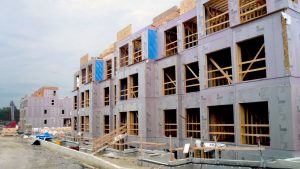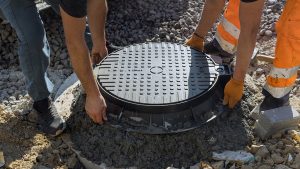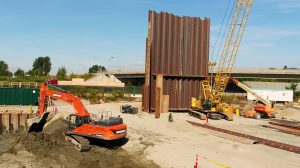Consistent with the continuing shift to see waste streams as a resource rather than a cost point, when it comes to technologies to extract energy that would otherwise be wasted, think of smelly off gases.
Vancouver-based Quadrogen is one of those innovative companies at the forefront of what’s becoming a standard option for any discussion around landfill, water treatment and agricultural biogases.
Across Canada and the U.S. there’s a keen awareness that recovering methane and converting it to a clean natural biogas, storing it as hydrogen in a fuel cell or using it to generate heat or electricity, is not only nice to have, it’s a must have.
Processing plants consume a lot of energy — energy that is getting ever more expensive. Even just offsetting some of their overhead is a bonus on the operations side while conserving energy off the grid is in everyone’s interest.
Quadrogen’s technology takes raw biogas from wastewater treatment plants, landfills and agricultural digesters, cleans them up and directs them to power reciprocating engines, gas turbines and fuel cells.
Until recently, biogas was seen as an unpleasant byproduct, created during the anaerobic bacteria treatment phase.
Normally those gases were flared-off but with rising energy prices and climate concerns, that’s all changed because methane is a much more toxic greenhouse gas than CO2.
As Nelson Chan, Quadrogen’s vice-president of business development points out, harnessing energy is on everyone’s mind these days.
"You can’t pick up a newspaper or turn on the TV without someone talking about green energy, conservation and climate change," he says. "And being Canadian we also really appreciate what our governments are doing to promote things like renewable natural gas."
It’s all driving interest in technologies such as those offered by Quadrogen, he says, though the market is largely untapped.
"I think I read the market in Canada alone is $2 billion and so it’s got to be 10 times that in the U.S.," he says. "We’re just getting started."
Uses for the energy derived from waste are plentiful. On farms bio-digesters feed into the natural gas pipeline, in landfill and wastewater the energy can be fed to the grid or used on site.
In Vancouver, for example, methane from the Delta landfill is piped to a $7.5-million Quadrogen system to fuel the Village Farms greenhouses.
Village Farms is one of the largest greenhouse growers of tomatoes, bell peppers and cucumbers in North America. The hydroponic facility is high tech with computer systems to control irrigation, fertilizers, carbon dioxide, light, temperature, ventilation, humidity and other climatic factors, powered in part by the landfill.
Quadrogen — meaning four streams from one source of electricity, heat, hydrogen and CO2 — provides all of those energies to Village Farms, providing up to 250 kWh of renewable electricity, up to 12 GJ/day of heat, up to five tonnes/day of food grade CO2 for use in Village Farms greenhouse and up to 125 kg/day of pure hydrogen which is stored in fuel cells.
Funding for the project came from several levels of government, including Sustainable Development Technology Canada, British Columbia’s Innovative Clean Energy Fund, the National Research Council Canada (NRC) Industrial Research Assistance Program and a $1 million loan from the BC Bioenergy Network.
Agencies like Agriculture and Agri-Food Canada also contributed.
What’s important about the system is that it just doesn’t capture the biogases but also cleans it of sulphur, siloxanes and other contaminants so that when it’s used as a fuel to power biogas generators, it is pure and won’t leave deposits internally which can cause premature failure.
Looking ahead, Chen says, they’re adding two more energy streams, biodiesel and bio-methane.
"Methane is a form of carbon and so you can process it to make that carbon chain longer and make biodiesel," he says. "What’s important is to note that natural gas is in fact a fossil fuel but renewable natural gas — bio-methane — is in fact a renewable form of energy."
As such, bio-methane has the same chemical structure of fossil derived natural gas and can be used the same way without having to install new burners.
Quadrogen is also getting attention south of the border with three systems up and running and a fourth nearing commission.
The biggest is the Fountain Valley wastewater treatment plant in Orange County, Calif. where their installation has been in operation since 2012.
Quadrogen’s system feeds FuelCell Energy’s sewage-to-energy hydrogen fuel cell plant co-located at the waste treatment facility and produces electricity, heat and hydrogen for vehicle fuel.
From the 400 million litres of wastewater it processes daily it generates half a million cubic metres of biogas, 16,000 kilograms of hydrogen and 2.4 million kWh of electricity annually.
"It’s a really efficient process," says Chan. "The energy lost during conversion is very small, you get almost the same energy out you put in. And because we’re dealing with gases, that energy can be stored until needed, unlike electricity from solar or wind which must be consumed immediately. There are no real energy losses from transmission either."











Recent Comments
comments for this post are closed